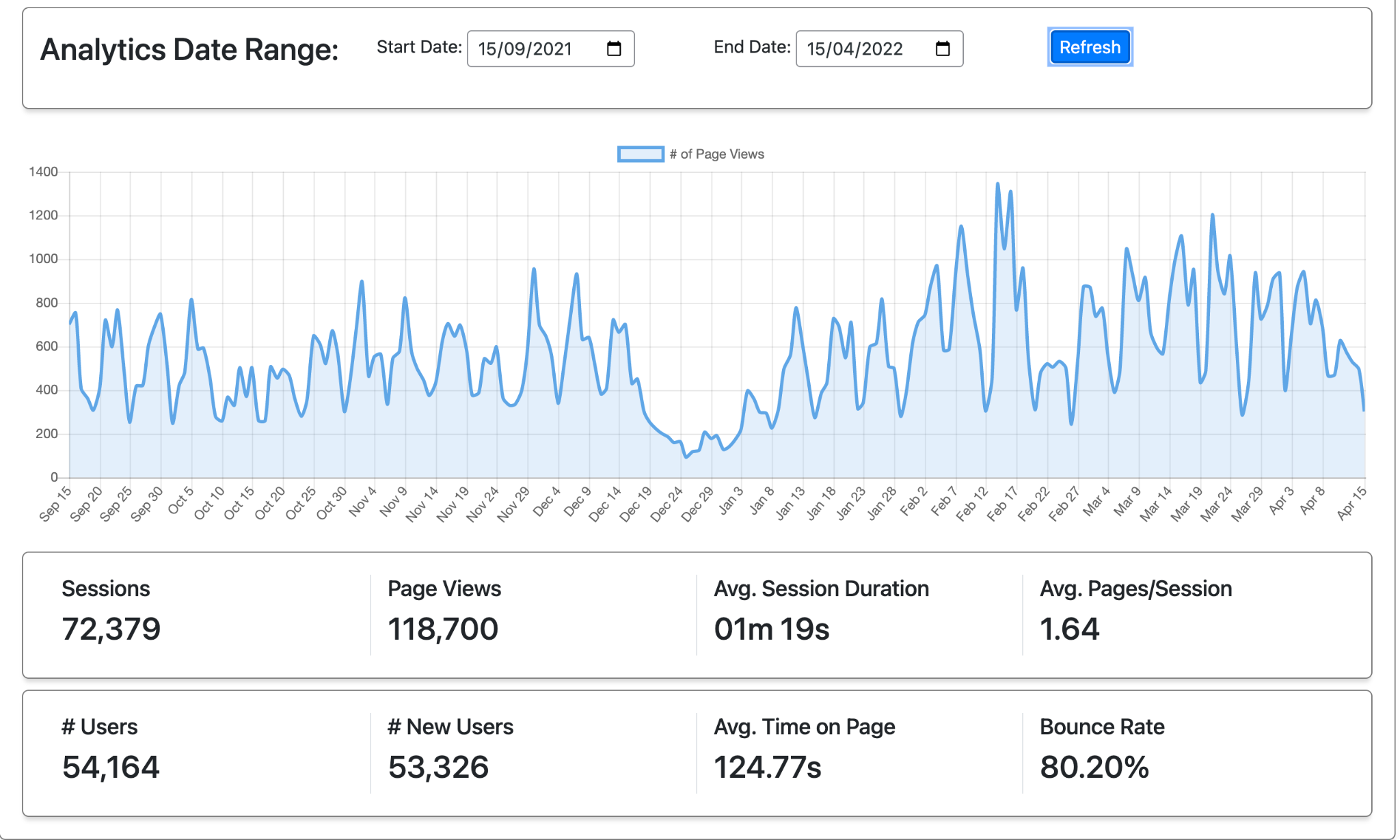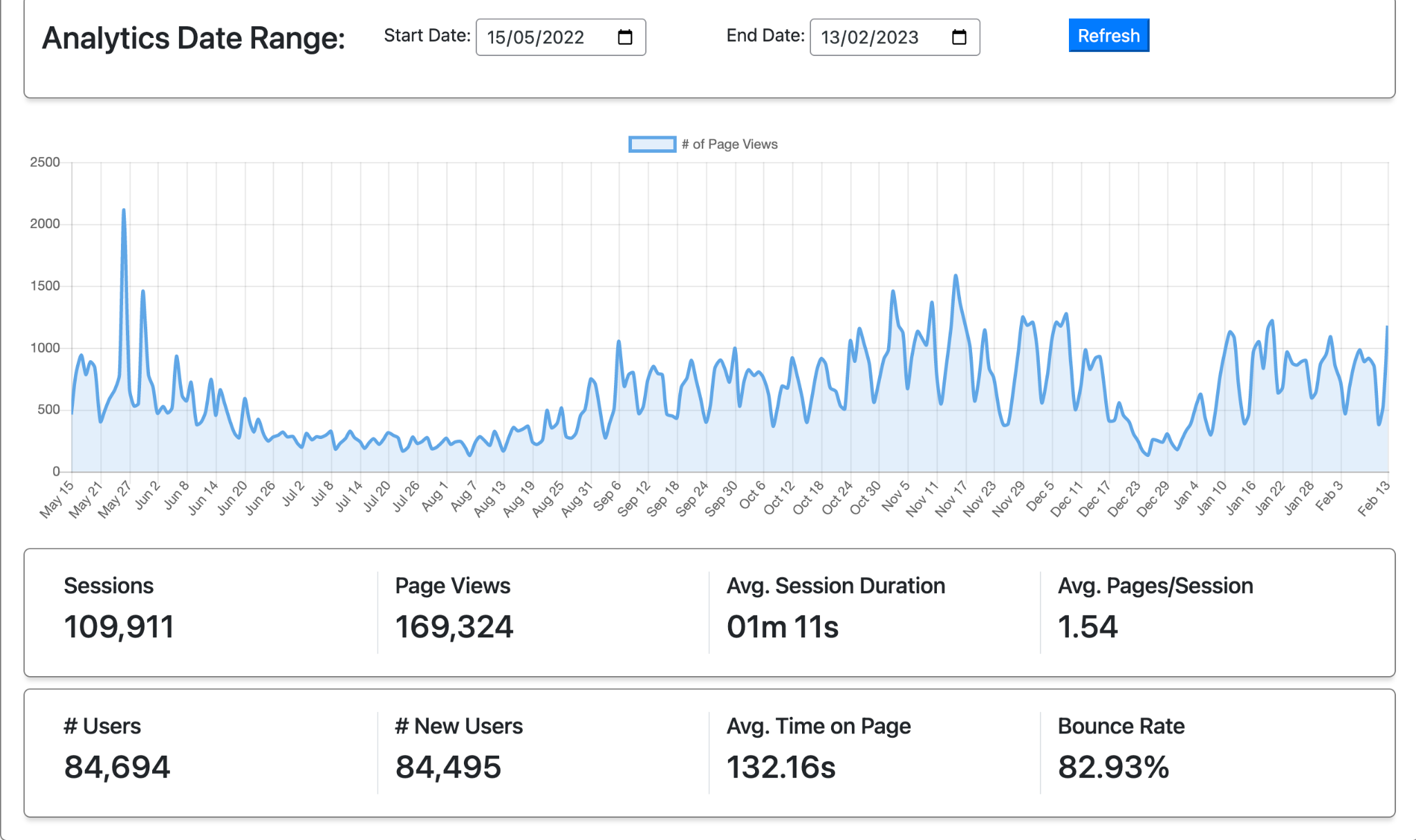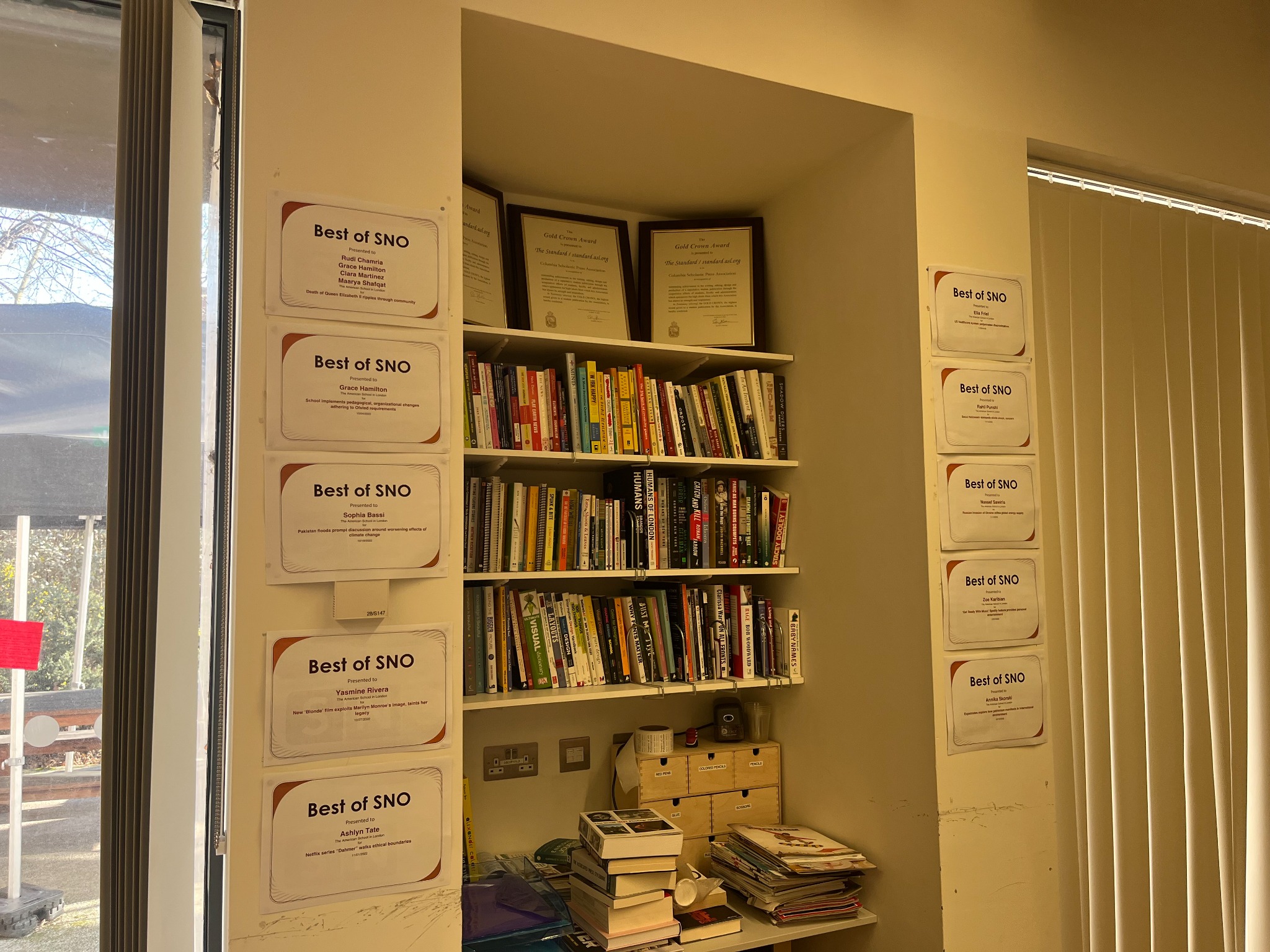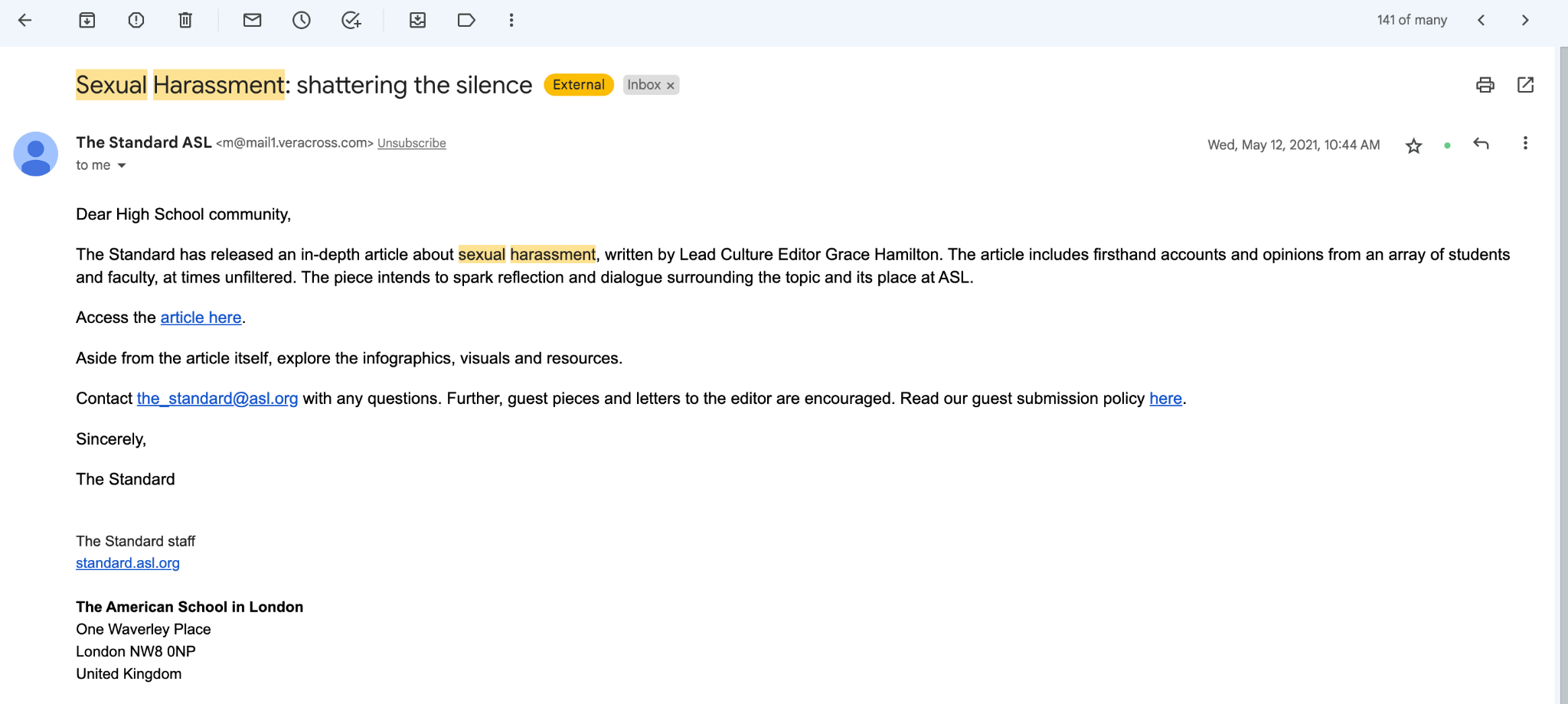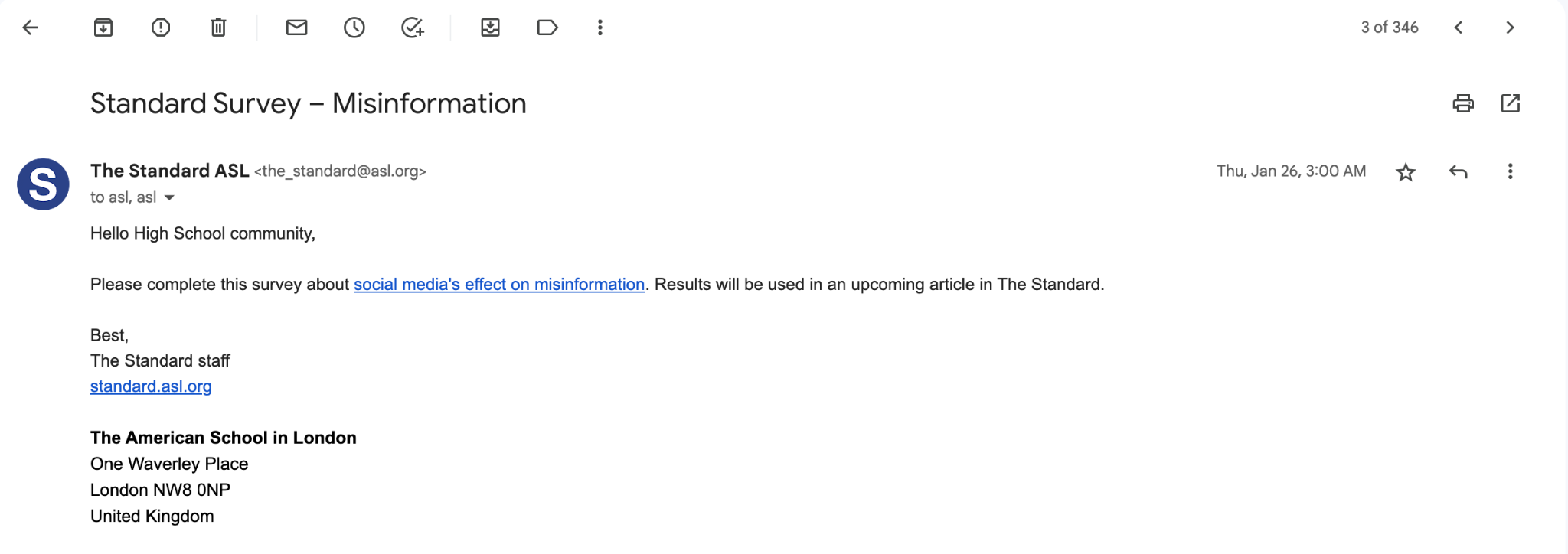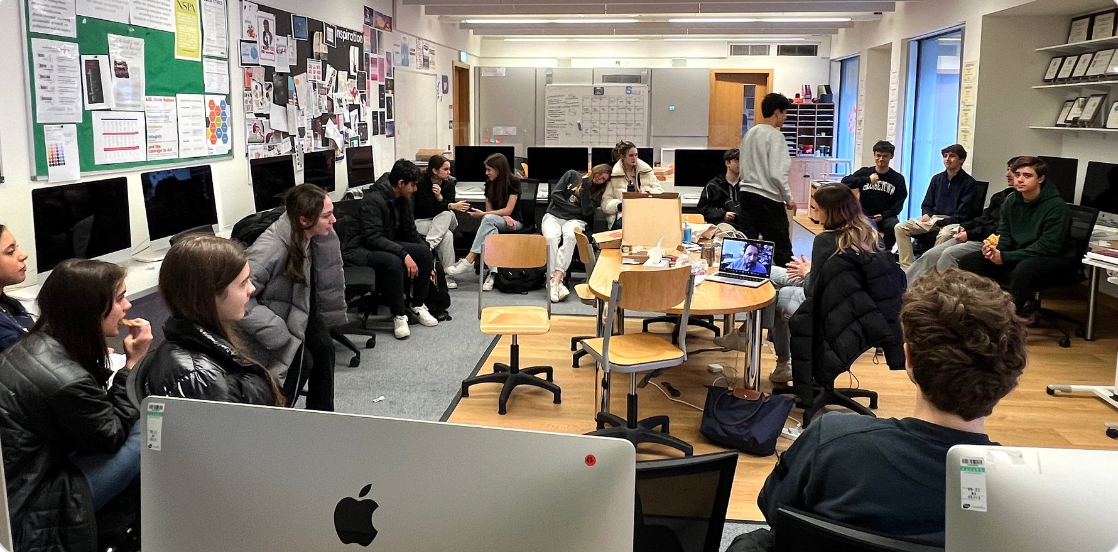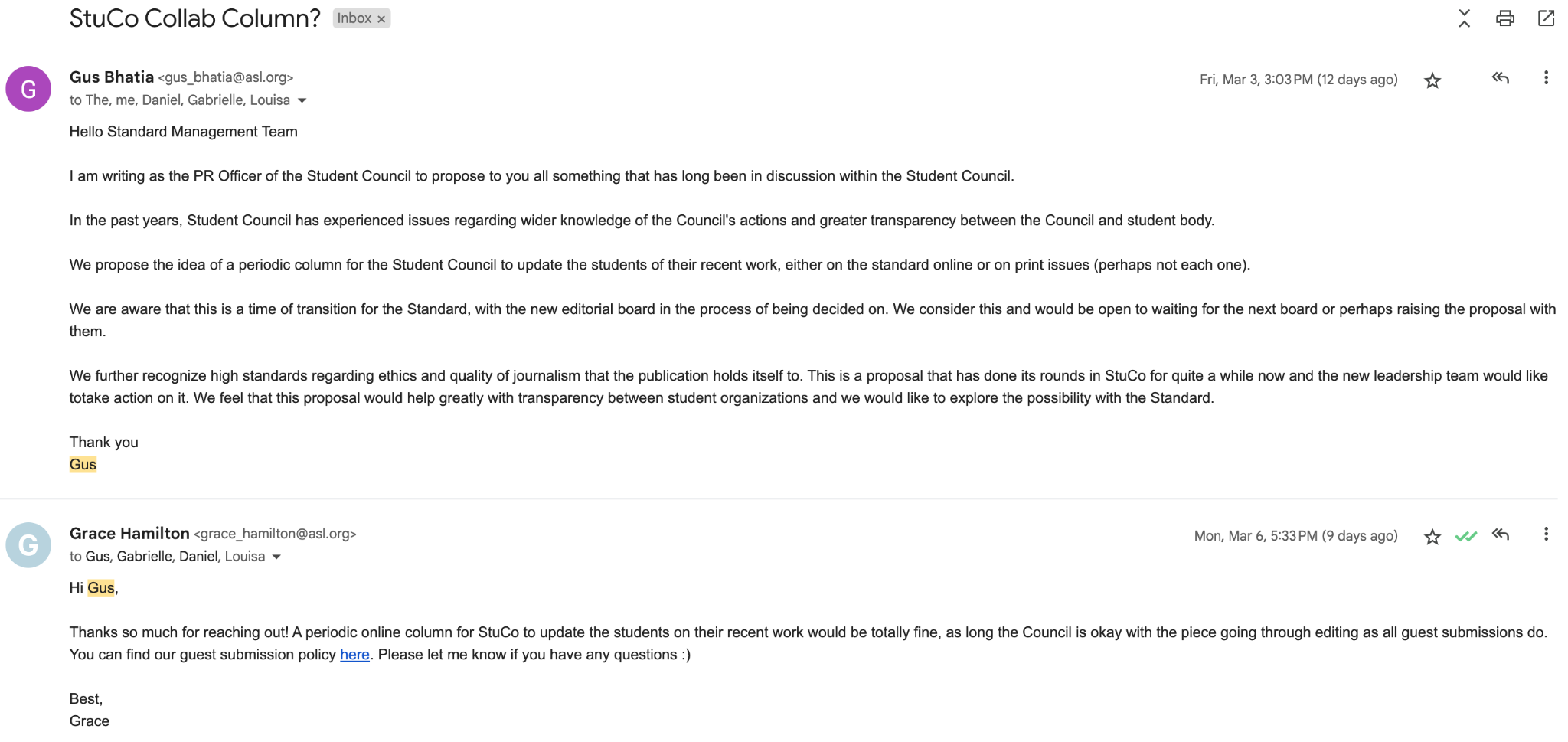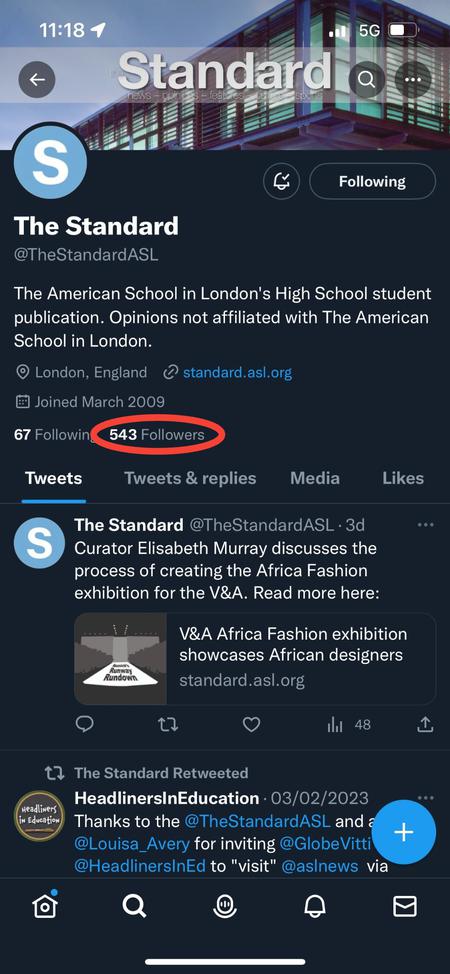

After identifying social media presence as a priority, I designated a Social Media Manager to publish our daily content. Each time an article is posted online, we promote that content on Twitter and Facebook. Each section is additionally responsible for creating one piece of Instagram content per week. Creating a consistent posting schedule ensures are viewers are not overwhelmed with excessive media and receive a balance in the type of content released. Below are the analytics I monitor across these platforms to target engagement:

To boost our engagement on Instagram, my DEIC: Online and I added an Instagram widget to our online site. When browsing online articles, readers can click on the widget to view our Instagram posts.

To promote our written content, we also use a "trending stories" widget to allow users to click through the most popular stories published in the past 30 days. This feature enables quick and easy access to stories that may interest them.

On our website sidebar, we also added a "subscribe" widget encouraging viewers to regularly engage with our content through email notifications.

Website analytics are my best friend. Every week, I monitor our analytics to determine the overall page views, time spent on each page and the number of regular viewers. This information helps inform our posting schedule and gives us an idea of the viewing habits of the audience to which we cater.
Using these analytics, I made it a goal to post each article before 8 p.m. Our viewership significantly decreases as we move later into the day, and thus, to boost the number of views each story receives, 8 p.m. is a feasible cutoff. If we miss this cutoff, we tend to schedule the post for the following morning.
Below are comparisons of our Sno website analytics. During my tenure as Editor-in-Chief, we have increased our page views by 50,624 and gained an additional 31,169 new viewers.
2021-22 analytics:
2022-23 analytics:
Alongside my DEIC: Print, I take on the responsibility of refilling our newsstands. We have two in the school – one at the hub of the high school and the other at the school entrance. Making the papers regularly available boosts readership and helps ensure our content reaches many facets of the school.

The Standard has a very close relationship with the alumni office coordinator in addition to other campus groups. Earlier this year, I wrote an announcement for our community bulletin requesting that parents fill out a form inputting their name and vocation to expand our source pool.
Among students, we frequently collaborate with the Student Council, the Sustainability Council and the Social Justice Council to ensure effective community involvement and integration. After posting an in-depth, online climate package, the Sustainability Council created a post promoting our content to the community, bolstering our readership:

The Best of SNO site gets a ton of traffic. Thus, I encouraged my staff to sign up for the weekly "Best of SNO" email summaries to familiarize themselves with the type and quality of content published. Receiving a regular flow of emails showcasing exemplar content both acts as motivation for the reporters and promotes familiarity with the content from which we should source inspiration.
During my time as Editor-in-Chief, reporters have won a total of 20 Best of SNOs. One recent article that won a Best of Sno entitled "'Spare' by Prince Harry undermines role of monarchy," went through three rounds of my edits before we posted to ensure his argument had sources to back it up. These awards have increased readership for those specific articles and directed additional traffic to our site.
I've frequently received positive notes from members of the community who have engaged with our work, whether our print issues or online articles:

When we release bigger stories, I draft an email to the community announcing it to maximize engagement:
Community-wide surveys are also integral to content engagement. To include the voice of our community and get a pulse of what content or issues matter to them, we frequently send out surveys, asking community members to respond to them and engage with our work.
During class periods or lunch breaks, I have organized speaker visits. Journalists such as Bill Brink and John Vitti have sat down with our staff to discuss methods of boosting engagement. Professional journalists have an abundance of experience in the field, and are able to share their wisdom about audience engagement and how we, as a student publication, can implement new practices to cater to the audience.
Across the school, we also advertised our website redesign, attaching a QR code for viewers to scan and explore the site.

Because we are a hybrid publication, I pushed for cohesion between our online site and our print design. Thus, when redesigning our online website, we decided to replace our previous logo with the logo we currently use for print. We similarly swapped our previous online color palette to match our print palette.

We also display our print issue on our online site, allowing readers to view an online PDF version of the physical issue to boost engagement.

During my time as Editor-in-Chief, I have revived our online editorial publishing. Editorials are crucial for audience engagement, expressing an opinion and call to action for an issue important to the student body. Recently, we began working on our print and online editorials simultaneously. Each class, we rotated groups to draft, revise and polish. Our most recent editorial is below, detailing student burnout and its presence in our school. Click the image to view the article:
Whenever possible, I encourage students not involved in The Standard to write guest pieces. After publishing my piece on sexual harassment, a girl in my English class approached me to share a story she had been inspired to write. Her piece was a creative amalgamation of the "in her words" multimedia element in my story. I encouraged her to submit her piece to The Standard, and a few days later, we published it. Click the image to view the piece:
Recently, a member of the Sustainability Council reached out asking how best to educate the community about Project Willow, which might prove dangerous to the worsening of climate change. In my response to her, I encouraged her to write a guest piece on Project Willow:
I have also met with members of the administration about guest submissions. Our assistant principal recently reached out asking about an opportunity to write a submission about celebrating history months, and I chatted with her the following day to walk through our steps for publishing the piece and get a better sense of their timeline. When the piece was posted, she emailed to thank us for providing a platform to write about an issue she is passionate about:
The PR Officer for the Student Council also reached out asking about a potential opportunity for a guest submission, and we are now working with the Council to help their vision for the piece come to fruition.
